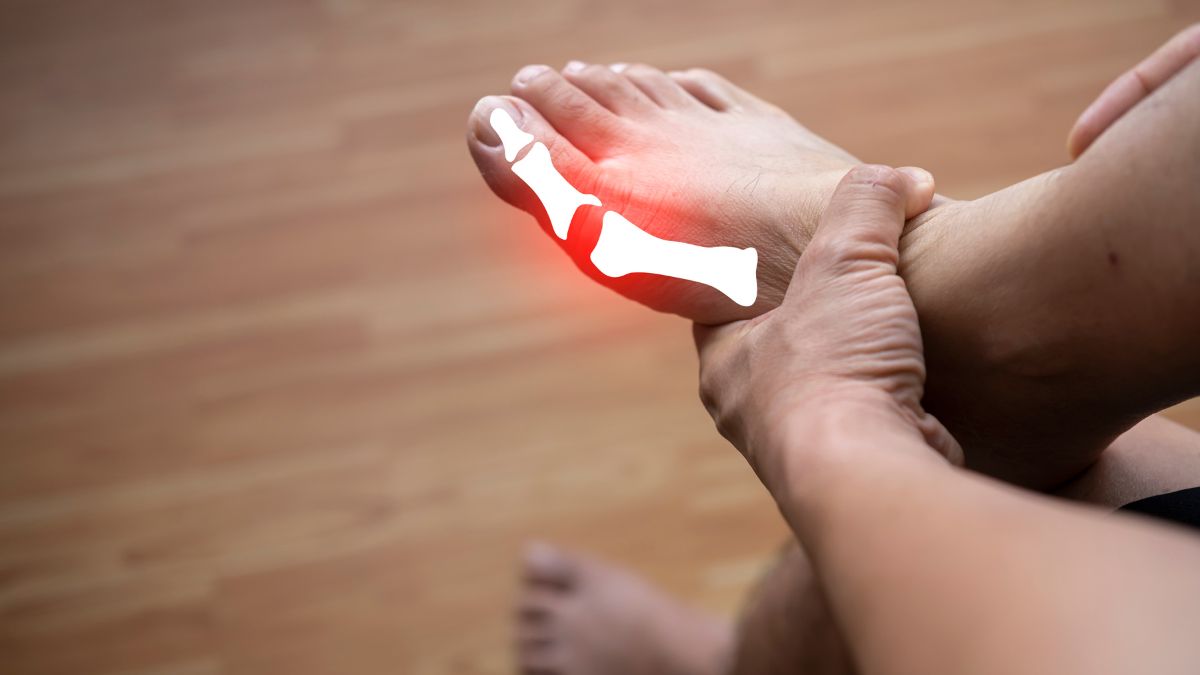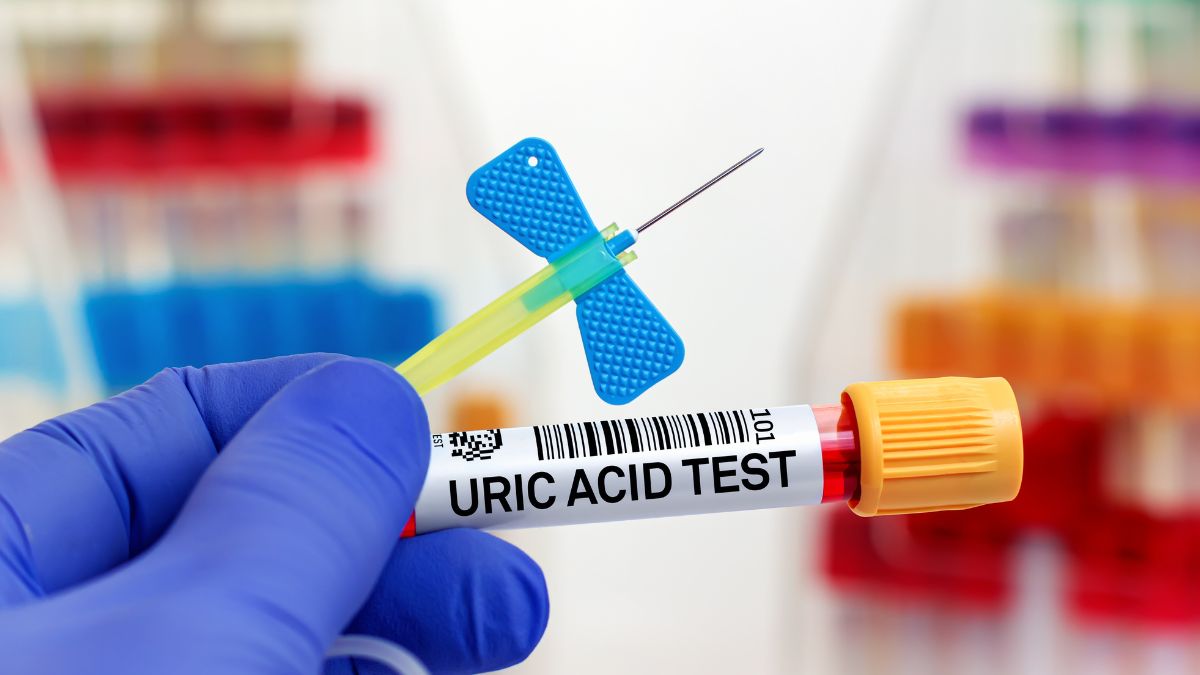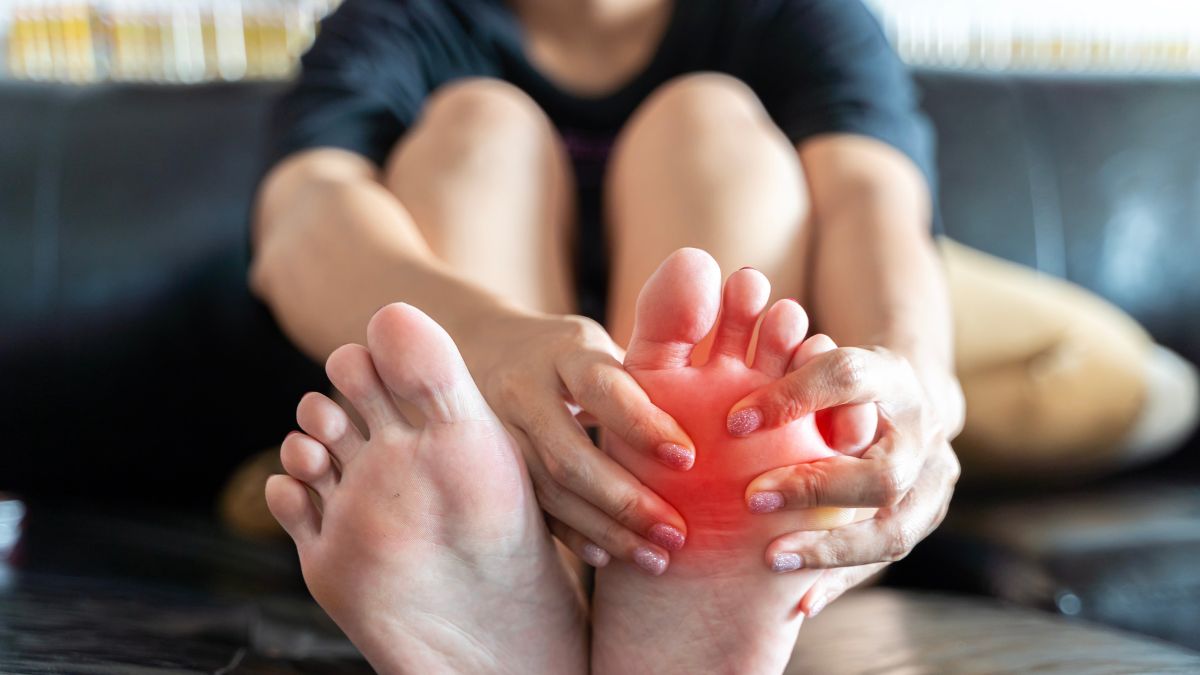- By Priyanka Munshi
- Fri, 13 Oct 2023 12:20 PM (IST)
- Source:JND
Hyperuricemia, or high uric acid levels in women, might be concerning since they may result in conditions like gout, kidney stones, or joint discomfort. High uric acid levels can affect women, especially after menopause, despite the fact that men are more frequently impacted by this ailment. High uric acid levels are largely caused by a combination of genetic, dietary, and lifestyle factors.
It is essential for women to keep a balanced diet, drink plenty of water, and control their weight in order to reduce the chances of having high uric acid levels and the difficulties that come along with them, according to Cleveland Clinic.

High uric acid levels are largely caused by a combination of genetic, dietary, and lifestyle factors. (Image Credit: Canva)
Effective management of this illness can also be achieved through routine examinations and discussions with a healthcare professional.
We've compiled some of the common signs of high uric acid in this section.
Also Read: How Often Do You Need To Get Your Eyes Tested? Know From Expert
Extreme Pain
High uric acid levels are characterized by severe and enduring pain in the fingers and toes.
Redness And Swelling
Clearly visible redness and swelling in the vicinity of the injured joints indicate inflammation.
Blisters
Blister growth around or on damaged joints, which could signify serious inflammation.
Fatigue
Persistent tiredness and weakness, which may appear together with other signs of high uric acid levels.
Also Read: 5 Impeccable Advantages Of Adding Pistachios To Your Diet
Fever
Elevated body temperature, which may be a reaction to an infection brought on by the high uric acid level.

High uric acid levels can affect women as well, especially after menopause, despite the fact that men are more frequently impacted by this ailment. (Image Credit: Canva)
Chills
Chills, which may be related to systemic reactions to uric acid-related problems.
Hard Lumps
Crystal deposits cause hard lumps or nodules to form around joints.
Brittle Nails
Broken nails The elevated uric acid level is linked to changes in nail texture, particularly brittleness.
Unable To Move Properly
Trouble correctly moving fingers and toes due to reduced mobility.
Heat Production In Affected Parts
Increased warmth or temperature near joints as a result of increased inflamation.
(Disclaimer: This article is for informational purposes only. It is not a substitute for professional advice, diagnosis or treatment.)

